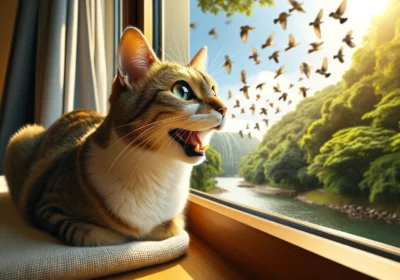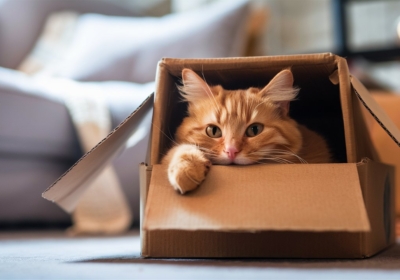Ahoy, fellow adventurers! Picture this: the vast, rolling seas, the creak of the ship’s timbers, and amid the seasoned sailors, a pair of curious, gleaming eyes peeking from the shadows. Yes, we’re talking about cats—those enigmatic, whiskered companions who have sailed the seven seas alongside humans for centuries. In “Cat Sailors: Exploring the Historic Role of Felines at Sea,” we embark on a voyage through time to uncover the extraordinary and often overlooked contributions of these maritime mousers. From keeping ships free of pests to providing companionship to weary sailors, these feline adventurers played crucial roles on board. So, hoist the anchor and join us as we delve into the fascinating tales of ship cats and their legendary adventures on the high seas.
Table of Contents
The Origins of Ship Cats
The history of cats on ships is as ancient as seafaring itself. Sailors discovered early on that bringing cats aboard was more than a comfort; it was a necessity. In the age of exploration, ships were plagued by rodents, which not only consumed precious food supplies but also carried diseases. Cats were the perfect solution. Their keen hunting instincts made them invaluable for maintaining a healthy and pest-free environment on long voyages.
The Egyptians, known for their reverence of cats, were likely among the first to introduce these feline companions to their trading vessels. As trade routes expanded, so did the presence of cats on ships, becoming a common sight on vessels across the Mediterranean and beyond.
Roles and Responsibilities of Ship Cats
The primary duty of ship cats was pest control. Rats and mice were not just a nuisance; they posed serious threats to the ship’s provisions and the health of the crew. Cats, with their natural predatory skills, efficiently managed these pests, ensuring that the sailors had sufficient food and reducing the risk of disease.
Beyond their practical role, cats also served as morale boosters. Life at sea was arduous and isolating. The companionship of a cat offered comfort and a sense of normalcy amidst the uncertainty of the ocean. Sailors often formed deep bonds with their feline shipmates, sharing stories and treating them as valued members of the crew.
Superstitions also played a part in the acceptance of cats on ships. Many sailors believed that having a cat on board would bring good luck and protect the vessel from harm. These beliefs were so strong that some ships even refused to set sail without their trusted feline.
Famous Ship Cats in Maritime History
Among the many cats that sailed the seas, a few have etched their names into maritime lore. One such cat is Unsinkable Sam, known for surviving the sinking of three ships during World War II. His incredible survival story turned him into a symbol of resilience and luck.
Another famous feline is Trim, the adventurous cat of Matthew Flinders, the British explorer. Trim accompanied Flinders on his circumnavigation of Australia and became a beloved companion and an integral part of the journey.
Then there’s Mrs. Chippy, who sailed with Sir Ernest Shackleton on the ill-fated Endurance expedition to Antarctica. Despite the tragic end of the voyage, Mrs. Chippy’s loyalty and the crew’s affection for him (despite the misleading name) were well-documented, adding a poignant chapter to the story of ship cats.
Daily Life of a Ship Cat
A typical day for a ship cat involved exploring every nook and cranny of the vessel, hunting for rodents, and basking in the sun on the deck. These cats quickly adapted to the rhythms of life at sea, developing a keen sense of balance and navigating the ship with ease even in rough waters.
Interactions with the crew were frequent and affectionate. Sailors would often share their rations with their feline friends, create makeshift beds for them, and even include them in daily routines and rituals. The bond between the sailors and their cats was one of mutual reliance and companionship.
The Impact of Ship Cats on Maritime Culture
The presence of cats on ships influenced maritime culture significantly. Sailors’ superstitions and lore were enriched with tales of these feline guardians. Many believed that a cat’s behavior could predict the weather or bring good fortune to the voyage.
Ship cats also found their way into art and literature, symbolizing the mystique and adventurous spirit of seafaring life. Paintings, stories, and poems celebrated their contributions and immortalized their presence on the high seas.
In modern times, the fascination with ship cats endures. They are remembered as symbols of resilience, companionship, and the unique bond between humans and animals in the most challenging environments.
Ship Cats Around the World
The role of ship cats varied across different cultures. In Japan, the legendary Maneki-neko, or “beckoning cat,” is believed to bring good luck and has roots in the protective roles cats played on ships. In Europe, ship cats were common on trading vessels, while in the Americas, they became essential members of naval ships and merchant fleets.
Unique stories of ship cats from various countries highlight the universal recognition of their value. Whether in the frigid waters of the North Atlantic or the warm seas of the Pacific, ship cats were trusted companions and skilled hunters.
The Legacy of Ship Cats
With the advent of modern pest control methods and changes in maritime practices, the presence of cats on ships has declined. However, their legacy remains alive in museums, monuments, and the hearts of those who cherish maritime history. Notable ship cats have been commemorated with statues and exhibits, ensuring their stories continue to inspire future generations.
Despite the decline of ship cats in contemporary times, the fascination with these maritime felines persists. Their tales of adventure and survival resonate with the enduring spirit of exploration and the deep bond between humans and animals.
Conclusion
As we journey through the pages of history, the role of ship cats emerges as a testament to the resilience, companionship, and adaptability of these remarkable felines. From their humble beginnings as pest controllers to their celebrated status as cherished companions, ship cats have left an indelible mark on maritime history. Their stories remind us of the enduring bond between humans and animals, a bond that has weathered the storms of the high seas and continues to inspire to this day.





